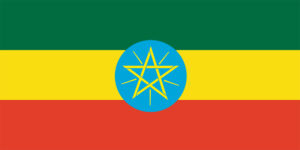Review Article
Deepak Kumar Verma from the Department of Biotechnology, Faculty of Natural and Computational Sciences, University of Gondar, Ethiopia, published a review on strategies MAP uses to persist in the host and in the environment.
Abstract
 Pathogenic mycobacteria have evolved the mechanisms to subvert host immune response in the favor of long-time persistence and proliferation in the intracellular environment of the host, with resulting in functional dysregulation and disease in the host. Among the genus mycobacteria, Mycobacterium avium subspecies paratuberculosis is a robust pathogen, have a remarkable capacity to persist in the host and adverse environmental conditions (pasteurization temperature, high pH) and recently, emerged as a major concern of public health significance. Mycobacterium avium subspecies paratuberculosis is the causative agent of Johne’s disease in animals and also has been incriminated as the causative agent of Crohn’s disease in human beings. Therefore, understanding the factors that contribute to the longevity of this pathogen is essential to restrict the clinical outcomes of infection and design the control strategies. The present review summarizes our understanding of factors that contribute to the survival of MAP within the host and different environmental sources.
Pathogenic mycobacteria have evolved the mechanisms to subvert host immune response in the favor of long-time persistence and proliferation in the intracellular environment of the host, with resulting in functional dysregulation and disease in the host. Among the genus mycobacteria, Mycobacterium avium subspecies paratuberculosis is a robust pathogen, have a remarkable capacity to persist in the host and adverse environmental conditions (pasteurization temperature, high pH) and recently, emerged as a major concern of public health significance. Mycobacterium avium subspecies paratuberculosis is the causative agent of Johne’s disease in animals and also has been incriminated as the causative agent of Crohn’s disease in human beings. Therefore, understanding the factors that contribute to the longevity of this pathogen is essential to restrict the clinical outcomes of infection and design the control strategies. The present review summarizes our understanding of factors that contribute to the survival of MAP within the host and different environmental sources.
Commentary: This article is highlighted in Johnes.org news because questions regarding MAP persistence in the environment are among the more common one submitted to the Ask and Expert feature of this website. Also, review articles like this one nicely compile and tabulate information from diverse sources. This 8-page article cites 89 references and is well-written. Lastly, I wish to highlight publications from countries like Ethiopia that have fewer research resources that many other countries.